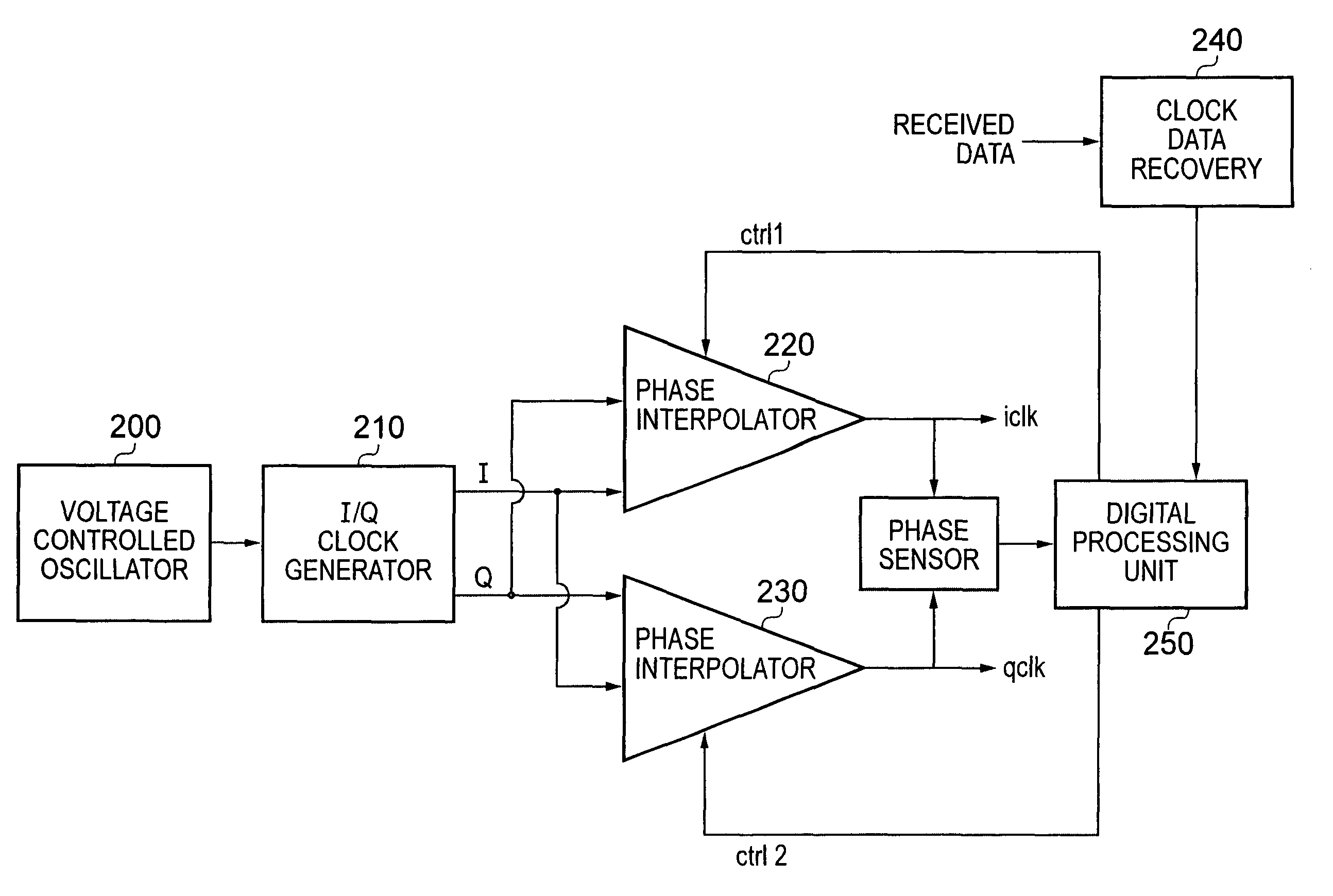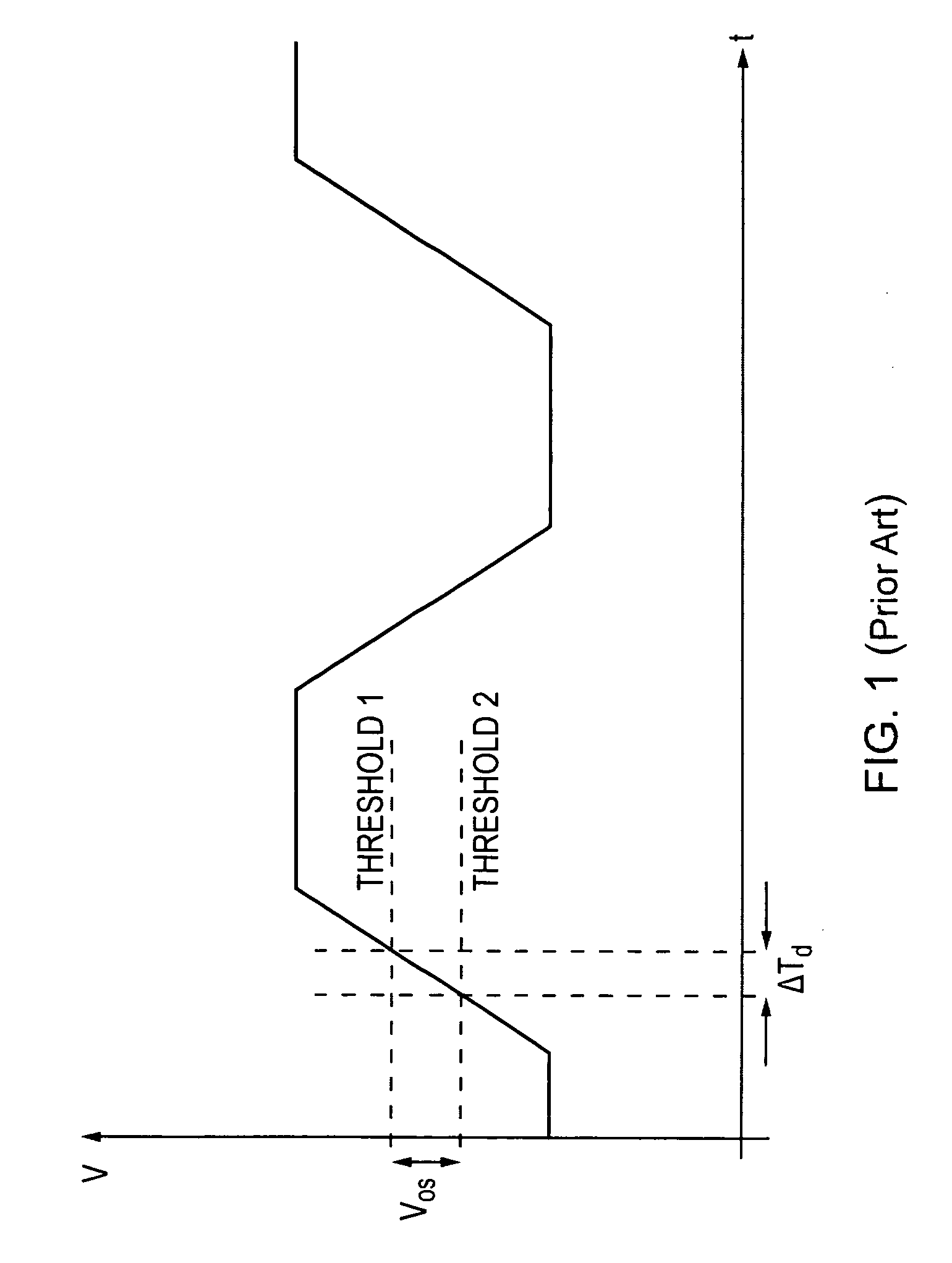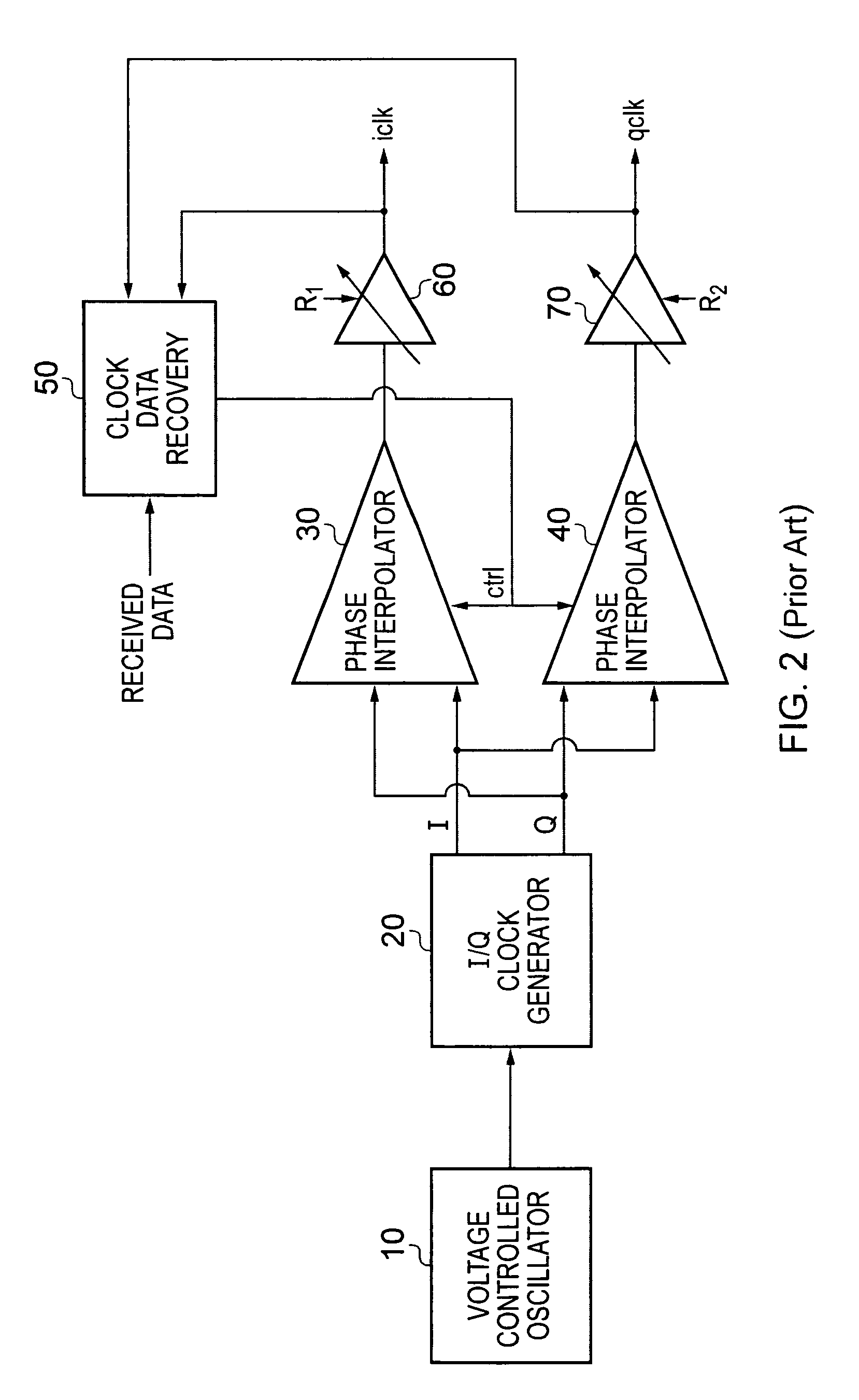Method of processing signal data with corrected clock phase offset
a clock phase offset and signal data technology, applied in the field of processing signal data, can solve the problems of more significant parameters, more involved clock distribution, and increased mismatch between different clock buffers or different clock paths, so as to achieve accurate signal data processing
- Summary
- Abstract
- Description
- Claims
- Application Information
AI Technical Summary
Benefits of technology
Problems solved by technology
Method used
Image
Examples
Embodiment Construction
[0057]FIG. 4 schematically illustrates a first example embodiment of the present invention in which a receiver generates two clock signals aligned with the clock signal in a received data stream. Voltage control oscillator (VCO) 200 generates a single frequency clock locked to a reference clock. This single frequency clock is passed to I / Q clock generation block 210 which creates two clocks with 90 degree offset from one another (I-clock and Q-clock). Note that in other embodiments it is also possible for the VCO to generate the I / Q clocks directly. The I and Q clocks are then passed to phase interpolators (PIs) 220 and 230. From these inputs the two PIs create two new clocks, iclk and qclk, with 90 degree offset from one another, as well as aligned with the clock signal in the received data. The iclk and qclk clocks are then used to sample and recover incoming data.
[0058]The alignment of iclk and qclk with the clock signal in the received data occurs by means of clock data recovery...
PUM
 Login to View More
Login to View More Abstract
Description
Claims
Application Information
 Login to View More
Login to View More - R&D
- Intellectual Property
- Life Sciences
- Materials
- Tech Scout
- Unparalleled Data Quality
- Higher Quality Content
- 60% Fewer Hallucinations
Browse by: Latest US Patents, China's latest patents, Technical Efficacy Thesaurus, Application Domain, Technology Topic, Popular Technical Reports.
© 2025 PatSnap. All rights reserved.Legal|Privacy policy|Modern Slavery Act Transparency Statement|Sitemap|About US| Contact US: help@patsnap.com



